#鍾馗
Photo

年末に進めていたお仕事。梅田にある男性専門の脱毛サロンです。 @mens_yes_umeda 壁面を灰色、真ん中の大きなカウンターをなんとも言えない焦茶と壁を隔てたカウンセリングルーム側はグレージュで染めました。 カウンター制作は絵画を描くような感覚で、空間をつくる絵師のような感じなのかなと自分では思っています。 #Repost @nishitenma_takei with @use.repost ・・・ . 【実は…】 10年前にまだ無名に近かった男性専門の脱毛事業を運営していて、その1号店としてグランフロントの真横にYESと言う男性専門脱毛サロンを開業しました。 流石に10年も経つとダサい内装となりましたので、ちょうどいい節目にリニューアルをしました。 元々骨董屋になる前から空間作りが趣味みたいなもので、今回も設計デザイン竹井。で皆様のご協力のもと完成となりました。 内装工事にはいつもお世話になりっぱなしの池内さん。 そして表層にはこの人しか最近頭に思い浮かばないw ハタノさん @hatanowataru もう和紙が繰り出す表情がすこぶる好きです。 脱毛屋にこんな内装ぶち込む必要があるのか?とムニャムニャ思いながら進めてみたのですが、 必要ないです。 必要無いけど、して良かったと思いました。 やはり、どの分野でも「誰もしてない」ってのが、完全に自己満足につながり、その自己満足がやる気を引き起こし、やる気が結果となる。 そう思います。 我ながらここに通えるお客さんと働くスタッフが羨ましい。 今回リニューアルキャンペーンをしてるので、よければ是非このアカウントの投稿をご覧下さい。 地域と言うか、業界最安値に近いキャンペーン価格になってると思います。 @mens_yes_umeda #ハタノワタル #歌川豊春 #鍾馗 #掛軸 #メンズ脱毛大阪 #紙漉キハタノ #和紙 #和紙職人 #Japanesepaper #handmade #工芸 #支持体 #craft #art #ハタノワタル (メンズ脱毛 大阪梅田【yes】) https://www.instagram.com/p/CnApfd4hnPL/?igshid=NGJjMDIxMWI=
3 notes
·
View notes
Photo

. #鍾馗 #花 #4月のお稽古 #茶道 #chado #wayoftea #teaism #茶の湯 #chanoyu #抹茶 #matcha #greentea #japanesetea #tea #星窓 #星窓茶道 #tokyo #japan #zen #禅 #インスタ茶道部 #tea #wabisabi (Minato-ku, Tokyo, Japan) https://www.instagram.com/p/Cd0mjoUPKV9/?igshid=NGJjMDIxMWI=
#鍾馗#花#4月のお稽古#茶道#chado#wayoftea#teaism#茶の湯#chanoyu#抹茶#matcha#greentea#japanesetea#tea#星窓#星窓茶道#tokyo#japan#zen#禅#インスタ茶道部#wabisabi
2 notes
·
View notes
Text

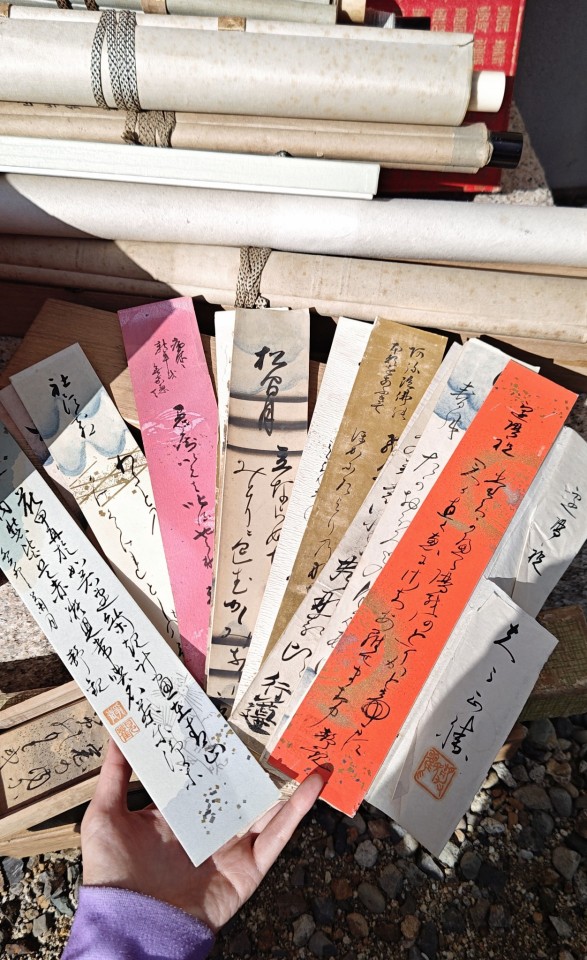

立雛の掛け軸を取り替えようと、掛け軸BOXを探してたら、書ばかりで、お雛様みたいな可愛い掛け軸はあんまり無かった😮💨
この和歌は 加茂季鷹 🌸が詠んだ和歌の一部みたい〽

加茂季鷹 花之歌🦋
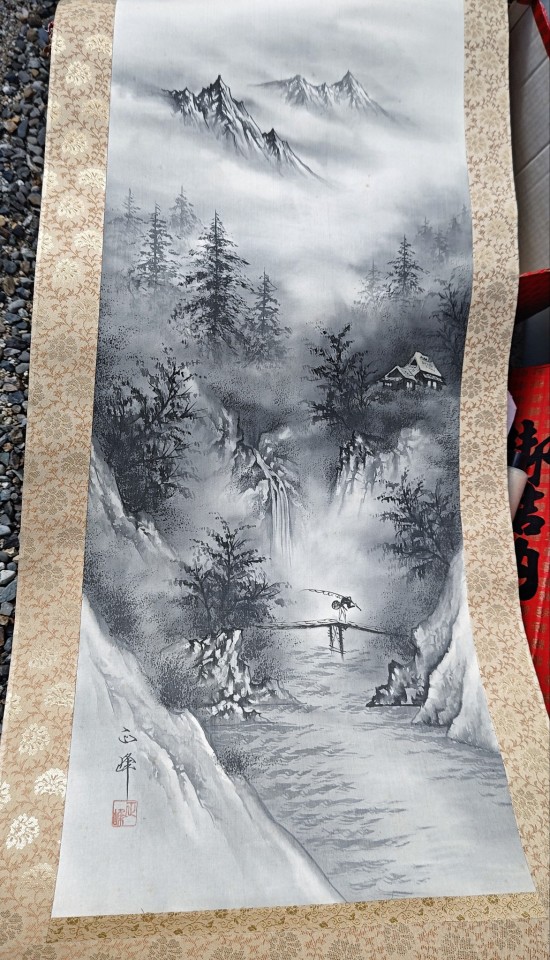
峰の水墨画も癒やされるけど、思いっきり和室にしか合わなそうなので、中国の鬼よりも強く魔除けの効果もあるらしい鍾馗🧌という神をお部屋に飾ってみました😛
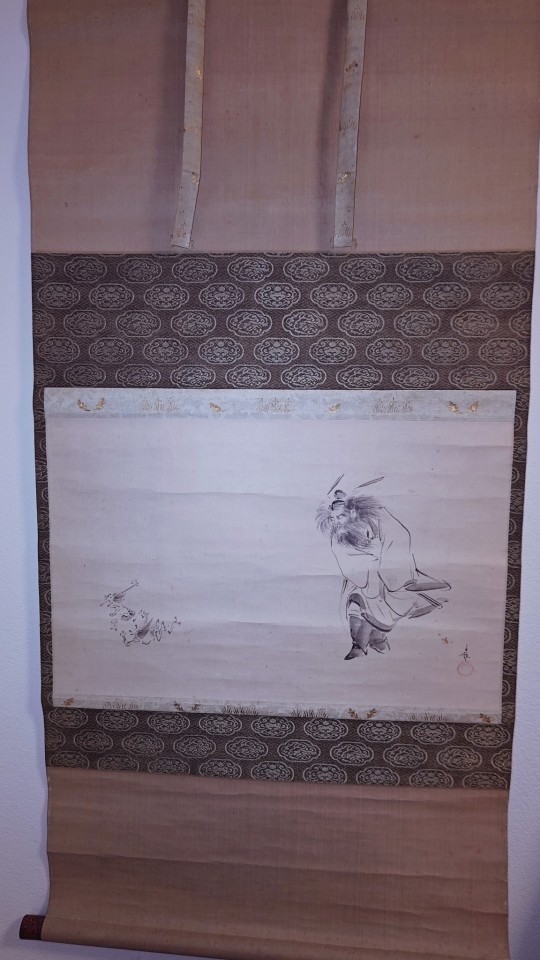
このしょうき様に降りかかる災いを跳ね返してもらいます👹
森高雅 もり-こうが 1791-1864 江戸時代後期の画家
寛政3年生まれ。尾張(おわり)名古屋の人。吉川一渓,中林竹洞,牧墨僊(ぼくせん)にまなぶ。浮世絵風の風俗画を得意とし,門人がおおかった。のち土佐派もまなぶ。元治(げんじ)元年5月4日死去。74歳。通称は右門,蜂助。号は玉僊,蝦翁など。
たかまさなの?
こうがなの?
もりたかみやび ではない🤭
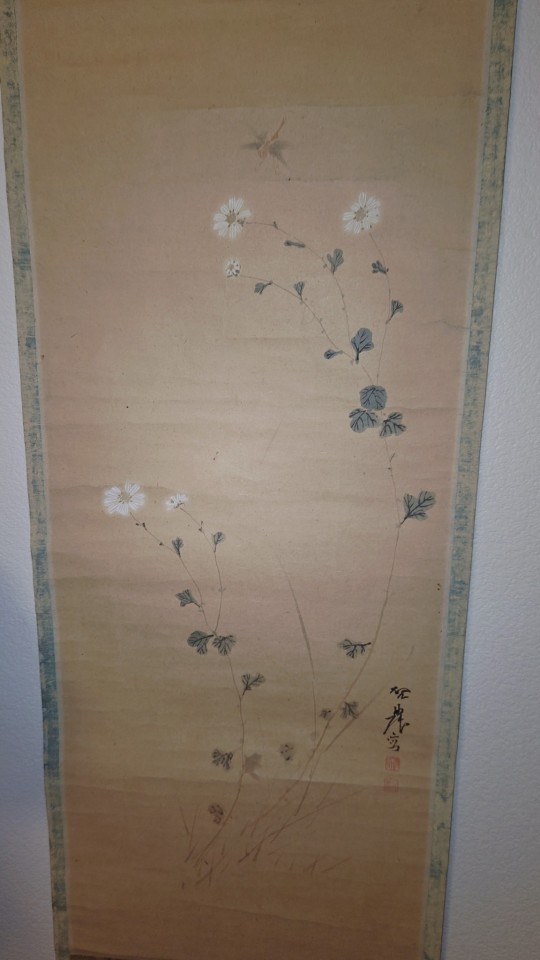
鍾馗🧌は、端午の節句に掛け軸や旗、屏風、に描いたり、鍾馗像を瓦屋根に飾ったり、厄除けとして奉納したりする風習があったようなので、鍾馗図は季節的に5月頃に飾ることにして、秋バージョンは蜻蛉にしようと思ってます🍂
古すぎて折れ線が付きまくってるんだが、シミもあるしクリーニングできないかね?
やっぱり着物でも掛け軸でも仕舞い込んだままじゃ息苦しいわよね、空気に触れさせて飾ってこそ味がでるのよ🤟

#鍾馗#渓谷#峰#玄宗皇帝#鍾馗大神#中国唐#水墨画#和歌#邪気除け#短歌#掛け軸#掛軸#屏風#瓦屋根#瓦#蜻蛉#蜉蝣#森高雅#浄土真宗#句仏上人#真宗大谷派#大谷光演#短冊#疱瘡除け#夢枕#古今和歌集#百人一首#賀茂季鷹#雲錦翁家集#古美術
0 notes
Photo

還行吧!唯一的缺點是價格。 #變形金剛 #鍾馗 #博派 #transformers #transformersphotography #transformersforlife #transformersgenerations #autobots #mpg01 #transformersmasterpiece #trainbot #shouki https://www.instagram.com/p/CfcuQ8ChvgH/?igshid=NGJjMDIxMWI=
#變形金剛#鍾馗#博派#transformers#transformersphotography#transformersforlife#transformersgenerations#autobots#mpg01#transformersmasterpiece#trainbot#shouki
0 notes
Photo
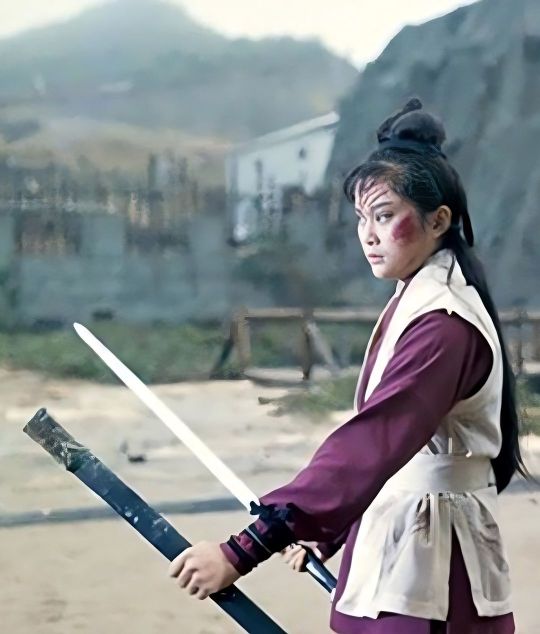
(via JHALAL DRUT: Shih Szu in The Lady Hermit [鍾馗娘子] (1971))
14 notes
·
View notes
Text
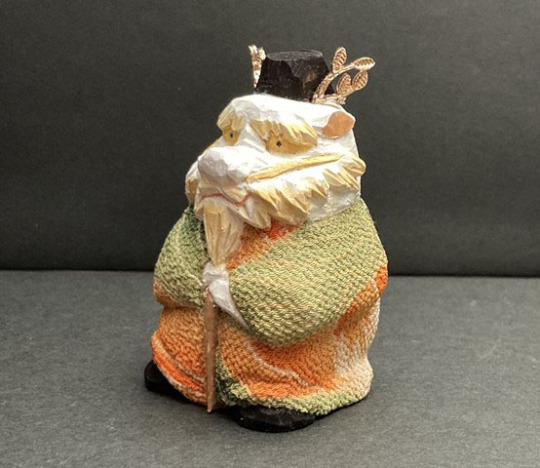


美彩新作「鍾馗龍」
鍾馗様の見開いた目と豊かな髭は、龍にも通じる威風堂々。
学業成就や魔除け、辟邪の象徴として日本でも敬われている鍾馗様を下敷きに彫ってもらいました。
白龍は風水だと西の守護、金運や仕事運、家庭運の運気を上げてくれる存在。龍の中で最も速く空を飛ぶことにあやかり、信心すると物事を速くよい結果に導くと言われるとか。
あやかって、心願成就、幸せをたくさん引き寄せてください。
木目込みの着物の色合いが、とても似合っていらっしゃる。
通販→http://goo.gl/zzmdh9
#干支飾り #辰 #龍 #鍾馗様 #縁起物 #インテリア雑貨 #和雑貨 #江古田 #新桜台 #木彫人形 #木目込み #西武池袋線 #練馬区 #贈り物 #プレゼント #ギフト
1 note
·
View note
Photo

很突然的單人出班 沒燈腳也沒底板 幫我準備器材的同事大概覺得我遇到的挑戰還不夠多 #南鯤鯓代天府 #代遠天長1662至2022建廟360系列活動 #代遠天長 #台灣守護文創 #台灣真美 #秀琴歌劇團 #鍾馗傳奇(在 南鯤鯓代天府) https://www.instagram.com/p/Cd0dBc8p7_nLNx2uGdG3BjHtBjD1mXgwcW2hTs0/?igshid=NGJjMDIxMWI=
0 notes
Photo
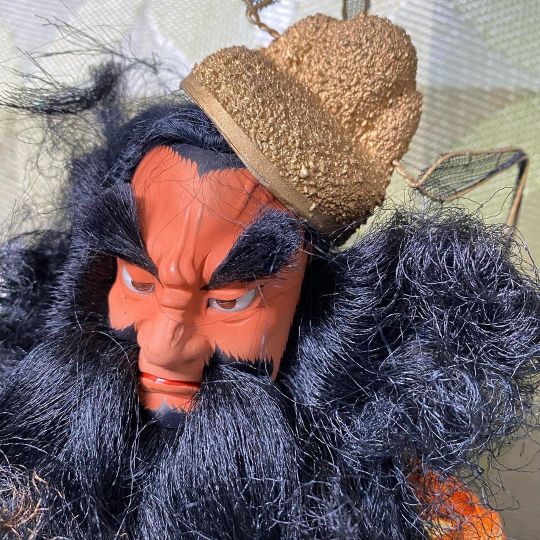
もうすぐ端午の節句。うちの鍾馗様、唐冠がどうしてもジュリーになっちゃう。イカす。 #五月人形 #鍾馗様 #こう見えて学業の神様 #もうすぐ50年 https://www.instagram.com/p/Cc7bBT8PRGv/?igshid=NGJjMDIxMWI=
0 notes
Text
"Nine-headed hermit": the early history of Zhong Kui (and his sister)

Gong Kai's painting Zhongshan Going on Excursion, showing Zhong Kui, his sister and various demons during a journey (wikimedia commons)
Zhong Kui is probably one of the most recognizable figures from Chinese mythology today and continues to star in novels, movies and other works. However, his modern image largely depends on sources the Ming and Qing periods. In this article, I’ll attempt to instead shed some light on some lesser known aspects of his earlier history. You will be able to learn why he was called a “nine headed hermit” despite having only one head, what he had to do with foxes, when his sister was portrayed as an exorcist like him, and more. As a bonus, I’ve included a brief summary of Zhong Kui’s reception in medieval Japan.
The earliest history of Zhong Kui
Zhong Kui’s history goes all the way back to the Zhou period (most of the first millennium BCE). A homophone of his name (鍾馗), zhongkui (終葵; also zhongzui, 終椎) at the time referred to a type of ritual mallet used to expel demons. During the Six Dynasties period first cases of this term (now written as 鍾馗 ori 鍾葵) being used as a personal name start to pop up. The purpose was most likely to confer the protection granted by such objects to a child just through their name. Numerous cases are attested, and it doesn’t seem the bearers of the moniker Zhong Kui can be distinguished by a specific origin, social class or even gender.
The earliest possible reference to a specific supernatural being named Zhong Kui comes from the Taishang Dongyuan Shenzhou Jing (太上洞淵神咒經; “Scripture of the Divine Incantations of the Abyssal Caverns of the Most High”), a Daoist work possibly composed as early as in the fourth century. The oldest surviving copy of the passage concerning Zhong Kui has been identified in a copy from Dunhuang dated to 664. He appears in it as an assistant of king Wu of Zhou and Confucius (sic) who helps them subjugate ghosts and disease demons.
It is not impossible that to the compilers of Taishang Dongyuan Shenzhou Jing Zhong Kui was only a stand-in for an exorcist, though, not a single well defined figure. There’s an eyewitness account of such specialists dressing up in leopard skins, painting their faces red and announcing they are Zhong Kui in another, slightly newer Dunhuang text. It specifies that many Zhong Kui exist, and that they answer to the “General of Five Paths”, an originally apocryphal Buddhist figure eventually canonized as one of the kings of hell (you can find an excellent article about him here).
In any case, regardless of the clear evidence for ambiguous use of the term in earlier times, it is agreed Zhong Kui became a well defined figure by the end of the Tang period. That’s also when legends about his origin started to circulate.
The legend of Zhong Kui

A typical depiction of Zhong Kui as a Tang period official by the Qing period artist Lü Xue (wikimedia commons)
According to the most popular version of Zhong Kui’s origin story, he was a scholar from the Zhongnan Mountains who lived during the reign of Gaozu of Tang (reigned 618-626). He took part either in the imperial examination or the imperial military examination (that’s an ahistorical detail - it was established by Wu Zetian in 702), but failed.
This detail is not elaborated upon further in early accounts, but by the Ming period it was attributed not to lack of skill but rather to prejudice against Zhong Kui’s physical appearance (he is fairly consistently described as dark-skinned, unusually tall, with a bulbous head and excessive facial hair). It’s possible that this new backstory was based in part on experiences of real officials of foreign origin, whose appearance was sometimes mocked by their peers, as already documented in Tang sources. Another possibility is that the descriptions were meant to be exaggerated to the point of making him resemble a demon, though.
Either way, out of despair caused by failure Zjong Kui committed suicide by smashing his head against the steps leading to the imperial palace. However, since in his final words he swore to protect the emperor and his realm, he didn’t return as a vengeful ghost, but rather as a queller of malevolent supernatural entities. Alternatively, he took this role out of gratitude for Gaozu, who was saddened by his death and organized the burial worthy of an honored official for him. Note that in later plays which often serve as the basis for modern adaptations, the burial is typically arranged by a certain Du Ping (杜平), a friend of Zhong Kui from back home.
Apparently a version in which the kings of hell are so impressed by Zhong Kui that they decide to make him the king of the ghosts also exists, though I was unable to track down its original source. In any case, he is associated with Mount Fengdu - one of the terms referring to the realm of the dead - in a poem by Song Wu (宋无; 1260–1340) already. He, or at least generic clerk figures based on his iconography, also sometimes appear in Song period paintings of the Ten Kings.
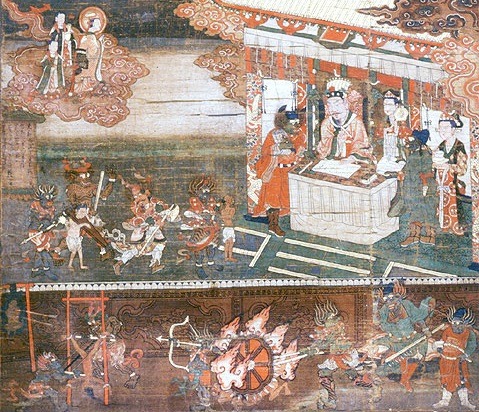
Several Zhong Kui-like clerks from a depiction of hell in Sermon on Mani's Teaching of Salvation (wikimedia commons)
According to Shih-shan Huang a single example of such a figure has even been identified in a Manichaean context, specifically in the scroll Sermon on Mani’s Teaching on Salvation.
Manichaean curiosities aside, supposedly the first person to be aided by Zhong Kui was emperor Xuanzong of Tang. At some point he fell gravely ill. In a dream, he saw a demon who attempted to steal a flute which was one of his most prized possessions. However, the attempt was foiled by a fearsome giant, who dealt with the thief rather brutally, poking out one of his eyes and then devouring him. After completing this act of demon quelling, he explained that he is Zhong Kui, and how he came to fulfill his current role.
After waking up, Xuanzong felt healthy again. He was so impressed he commissioned Wu Daozi, arguably the most famous artist in China at the time, to prepare a painting of Zhong Kui which could be used as a talisman against any further supernatural issues. Supposedly it left quite the impression on the general populace, and soon numerous images of Zhong Kui started to be distributed as talismans. There is definitely a kernel of truth to this part of the legend, as eyewitness accounts of Wu Daozi’s painting exist, but the work itself is lost.
As a side note, it’s worth pointing out the flute thief demon, despite meeting a gruesome end here, enjoyed a literary afterlife of his own. A certain Li Mingfeng (李鳴鳳), the author of a colophon on one of the earliest surviving Zhong Kui paintings, suggests that the (in)famous rebel An Lushan might have been a reincarnation of this specific entity. While I am not aware of any other attempts at providing him with a backstory, in Ming period retellings of the legend, he received a name, Xu Hao (虛耗).
Zhong Kui’s later career
Zhong Kui’s popularity grew after the Tang period, and he arguably eclipsed figures such as the fangxiang (方相) or the baize (白沢) as the demon queller par excellence. Legends about his origin and his first notable act of demon quelling which I summarized above spread far and wide during the reign of the Song dynasty.
After becoming a well defined figure, Zhong Kui came to be most commonly classified as a ghost (鬼; gui). In texts from the Song and Yuan periods he is often labeled more specifically as a “big ghost” (大鬼, dagui) or “ghost hero” (鬼雄, guixiong). However, his popularity effectively made him a god in popular imagination, and as a matter of fact he is referred to as such. His divinity is not exactly conventional, though. This topic is addressed in Fu Lu Shou Xianguan Qinghui 福祿壽仙官慶會 (The Immortal Officials of Happiness, Wealth and Longevity Gather in Celebration) by the Ming playwright Zhu Youdun (朱有燉; 1379-1435). Zhong Kui says himself that unlike his peers, he has no festival to call his own, and receives no regular offerings - and yet, he still vanquishes malicious entities on behalf of humans as long as talismans showing him continue to be distributed.
Interestingly, despite his long career in texts, no images of Zhong Kui older than the thirteenth century are known. This is mostly a matter of selective preservation, though - we know that depictions of him existed as early as in the ninth century, and that they were mass produced, presumably as woodblock prints, in the tenth. However, he didn’t necessarily look similar to his modern depictions. He actually only came to be depicted as a Tang scholar in the Song period. It seems earlier his costume might have varied.
One thing which seemingly remained consistent when it comes to Zhong Kui’s appearance is his facial hair. This feature is even emphasized in many of his epithets, such as “Old Beard” (老髯, Lao Ran), “Bearded Elder” (髯翁, Ran Wong) or “Bearded Lord” (髯君, Ran Jun). It’s possible that this was initially a way to highlight his vitality and his opposition to disease-causing demons.
Tang and Song sources indicate the state of facial hair could be viewed as an indicator of health. There’s even a handful of peculiar anecdotes about certain emperors, like Taizong of Tang or Renzong of Song, believing their facial hair has supernatural healing powers and offering ailing courtiers concoctions in which it was one of the ingredients. There’s no evidence Zhong Kui’s hair was ever believed to serve a similar purpose, though.
Not all of Zhong Kui’s titles revolve around his beard, though. An interesting example is “Nine-Headed Hermit” (九首山人). The intent isn’t to imply he has nine heads, it’s a multilayered pun instead. The character 馗 in Zhong Kui’s name is a combination of 九, “nine”, and 首, “head”. Referring to him as a “hermit”, literally “man of the mountain”, is likely supposed to show that he traverses areas traditionally believed to be inhabited by demons.

The nine-headed snake Xiangliu (wikimedia commons)
Chun-Yi Tsai suggests that this title also highlights Zhong Kui’s physical prowess by implicitly evoking “a nine-headed serpent known for its tremendous strength in Guideways through Mountains and Seas” (presumably Xiangliu).
Zhong Kui’s strength lets him punish his enemies in various unexpectedly creative ways. The earliest sources already mention he could grind vanquished demons in a mill, for instance. References to eating them are particularly common. Depending on the source, Zhong Kui might simply devour them whole, hunt and prepare them like game animals, chop them up to pickle them, mince them to prepare meat snacks, squeeze them to make juice and wine, and so on.
Such comedically gruesome descriptions are generally limited to textual sources, since violence was rarely depicted in other mediums, even in relation to military topics. Wu Daozi’s lost painting was apparently one of the exceptions, as according to a tenth century description it showed Zhong Kui gouging out the eyes of the captured demon.
Zhong Kui’s sister and other assistants
While Zhong Kui is often depicted in the company of nondescript demons, there are relatively few recurring figures associated with him. The main exception is his sister. The Song period painter Gong Kai (龔開) and his contemporary Li Mingfeng (李鳴鳳) simply refer to her as Amei (阿妹), literally “younger sister”, though here it’s apparently a personal name, following Chun-yi Tsai’s interpretation. Her origin is unknown, and she is not present in any of the early variants of the legend.

Zhong Kui Marrying Off His Sister (wikimedia commons)
Today Zhong Kui’s sister is known chiefly from works of art in various mediums which can be broadly subsumed under the label “Zhong Kui marrying off his sister” (鍾馗嫁妹, Zhong Kui jiamei) which proliferated through the Ming and Qing periods. This label is sometimes applied to earlier paintings too, for example Zhong Kui Marrying Off His Sister (鍾馗嫁妹圖, Zhong Kui jiamei tu) is the conventional modern title of a scroll attributed to the poorly known painter Yan Geng (顏庚). A colophon from the Ming period describing this work calls the figure presumed to be Zhong Kui’s sister Ayi (阿姨; an informal way to refer a maternal aunt) as opposed to Amei.
Chun-yi Tsai states it is not impossible that the woman is supposed to be Zhong Kui’s wife, rather than his sister, though. The painting can be dated to the Yuan period, and there is no evidence for the story of Zhong Kui marrying off his sister before the Ming plays - granted, it is not impossible that it was already in circulation earlier. Still, other paintings showing Zhong Kui marrying off his sister only date to the Qing period. Additionally, the procession might be a parody of paintings showing rural marriages or couples moving to a new house.
While as far as I am aware this eventually went out of fashion, in early sources Zhong Kui’s sister could be portrayed as an exorcist herself. An example can be found in one of the sermons of the Chan monk Yuanwu (圓悟; 1063–1135), in which he states that celebrations on the “Double Fifth” (端午節, duanwu jie) - the fifth day of the fifth month - involved a dance of “Zhong Kui and his little sister”. A reference to performers dressed up as the pair (as well as kings of hell, gods of soil and stove, various warrior deities and more) has alsobeen identified in an account of celebrations in Kaifeng from the end of the reign of the Northern Song dynasty.
Similar evidence can be found in art too. For example, Zheng Yuanyou (鄭元祐; 1292-1364) in a poem inspired by a painting titled Zhong Kui’s Sister (馗妹圖; as far as I am aware, this work has not been identified) states that she travels alongside her brother, that she’s armed with a sword, and that demons fear her. A related portrayal of her is known from a critical review of the works of Si Yizhen (姒頤真), a Song dynasty painter. According to Gong Kai, in one of his paintings she is shown in tattered (or unbuttoned - the term used, 披襟, can mean both) clothes, and chases away a boar attacking her brother. He was evidently not fond of this innovation, and criticizes it as “vulgar” and inappropriate.
It needs to be stressed that Gong Kai’s displeasure wasn’t necessarily tied to presenting Zhong Kui’s sister as a demon queller, though. In fact, he is actually the author of the most famous work portraying her in this role.

Gong Kai's take on Zhong Kui's sister and her attendants (wikimedia commons; cropped for the ease of viewing)
Gong Kai depicted Amei in unusual black makeup, which is also worn by female demons accompanying her (note the one carrying a kitty!). This might be a parody of the sanbai (三白; “three whites”) face painting popular in the Song period. She and her attendants wear robes decorated with depictions of the “five poisons” (五毒), a term referring to animals perceived as particularly dangerous and inauspicious. The exact list varies, though centipedes, scorpions and snakes in particular are mainstays. The five poisons are directly associated with Zhong Kui, as he can be invoked to ward them off. Direct evidence first appears in the Qing period in accounts of the well known Dragon Boat Festival, but it’s not impossible this was an earlier development.
It is presumed that Gong Kai’s painting might depict Zhong Kui and Amei looking for a demonic version of Yang Guifei, as indicated by various hints in colophons. Her portrayals in art are quite diverse, but attributing demonic traits to her would be hardly unparalleled - she could even be described as a “palace demon” (宮妖, gong yao). The decline of the Tang dynasty was blamed on her, and metaphorically she might have been invoked to criticize other people believed to improperly use the power granted to them by the imperial court.
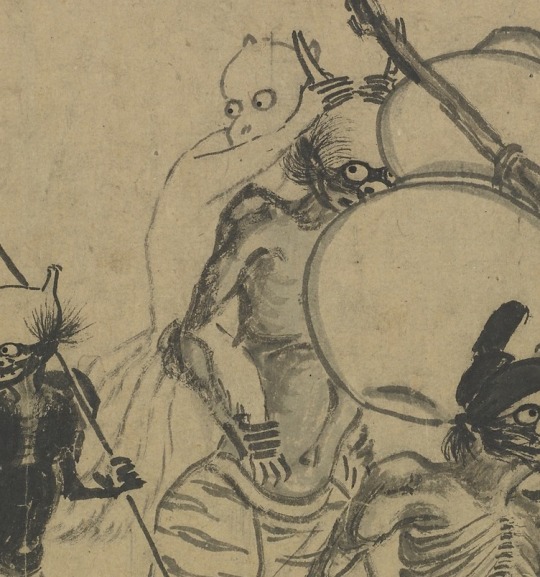
Gong Kai’s painting also depicts a less recurring member of Zhong Kui’s entourage. One of the demons carries a fox, specifically a nine-tailed specimen. The association between this animal and Zhong Kui goes all the way back to the early Tang period. In one of the Dunhuang manuscripts, the demon queller’s entourage includes a nine-tailed fox and a baize, who acted as bringers of good luck alongside him. It’s also worth pointing out that in another text from the same site, his mount during the hunt for a wangliang (魍魎; I will likely cover this entity a future article, stay tuned) is a “wild fox”.
Chun-Yi Tsai attributes the inclusion of a nine-tailed fox among Zhong Kui’s servants as a “family pet” of sorts to the portrayals of this supernatural creature both as an apotropaic antidote to poison (including the five poisons) and as a demon in its own right. It would be a suitable member of Zhong Kui’s entourage both as a conquered malevolent being and as an amplifier for his exorcistic, protective power.
A further possibility is that the association is the result of wordplay. A new year celebration involving a procession of people dressed up as members of Zhong Kui’s entourage, including his sister and various supernatural attendants, was known as dayehu (打夜胡). The homphony between 胡 and 狐, “fox”, might have resulted in the inclusion of the animal among the helpers.
Post scriptum: Zhong Kui in Japan
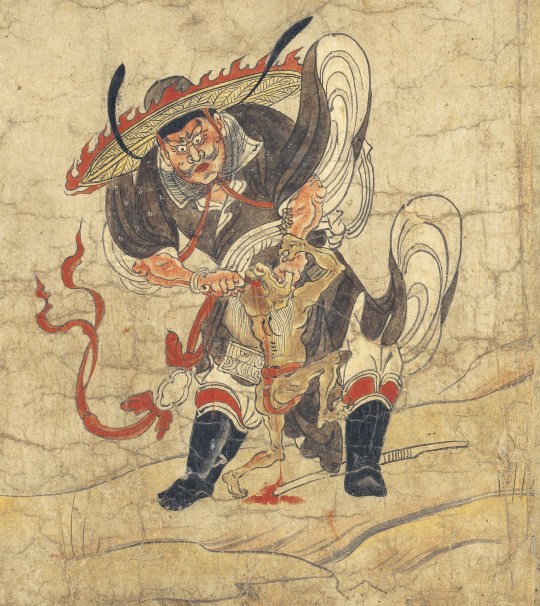
Zhong Kui, as depicted in Extermination of Evil (wikimedia commons)
Zhong Kui - or rather Shōki, following the Japanese reading of his name - probably reached Japan in the Insei period. Many other figures originating in China reached a considerable degree of popularity in Japan at roughly the same time - Taishan Fujun, Siming, Wudao Dashen, Pangu, Shennong, the examples keep piling up.
The oldest known Japanese depiction of Zhong Kui, which you can see above, is a painting from the twelfth century set known as Extermination of Evil. It might look a bit outlandish compared to most of the other depictions shown through this article, but I was able to locate a very close Chinese parallel:

A Yuan period depiction of Zhong Kui from the collection of the Beijing Library, via Richard von Glahn’s Sinister Way. Reproduced here for educational purposes only.
This is a Yuan period illustration said to be based on Wu Daozi’s painting. Zhong Kui doesn’t look like a Tang scholar yet, and the jacket and wide-brimmed hat are remarkably similar. It seems safe to assume that the Japanese painter was following a similar model - presumably one of the many now lost early depictions of Zhong Kui.
Slightly antiquated iconography surviving far away from the core area associated with a specific figure would hardly be unparalleled - it has been recently suggested that the baize/hakutaku is a similar case, with Japanese depictions and descriptions matching Tang sources fairly closely, but missing the elements which developed in the Song period or later.
For the most part, Zhong Kui fulfilled a similar role in Japan as in China: he was regarded as a fearsome demon queller, and images representing him were distributed for apotropaic purposes. However, it’s also important to note that there were certain innovations. He arrived in Japan at the brink of the middle ages - theologically speaking an era of unparalleled innovation, during which both native and imported figures were interpreted in unexpected ways, leading to the rise of a new “medieval mythology”. Zhong Kui was hardly an exception from this trend.
A “medieval myth” involving Zhong Kui is known from Hoki Naiden (ほき内伝; “Inner Tradition of the Square and the Round Offering Vessels”), an onmyōdō treatise traditionally attributed to Abe no Seimei, but most likely written by one of his descendants in the fourteenth century. Curiously, Zhong Kui’s name is written in it as 商貴 instead of the expected 鍾馗.

Tenkeisei (wikimedia commons)
In the Hoki Naiden, Zhong Kui is still a queller of malevolent supernatural beings. However, instead of being a scorned scholar, he is a yaksha who became the ruler of Rājagṛha, a city in India. He is said to correspond to both the medieval Japanese deity Gozu Tennō (牛頭天王), and to his celestial “double” Tenkeisei (天刑星; from Chinese Tianxingxing), the “star of heavenly punishment” (I covered him here). They are said to be his manifestations respectively on earth and in heaven.
This equation might seem random at first glance, but both of them actually had a lot in common with Zhong Kui: all three were believed to keep demons, especially those causing diseases, in check. Curiously, the reinterpretation of Zhong Kui as a yaksha turned king can also be found in the Genkō Shakusho (元亨釈書), a Kamakura period Buddhist history book. However, I am not aware of any studies examining it in more detail. I assume identifying him as a yaksha was a result of association with Gozu Tennō (I briefly discussed his yaksha credentials here), rather than the other way around, though.
While Hoki Naiden ultimately pertains more to medieval than modern religion, it’s worth noting that an unconventional take on Zhong Kui is still part of an extant tradition. Through history, Zhong Kui could be identified as a dōsojin (道祖神). This term denotes a class of deities meant to protect roads, crossroads and borders of villages. In parts of the Niigata prefecture this form of him is sometimes referred to as Shōki Daimyōjin (鍾馗大明神) today.
Bibliography
Joshua Capitanio, Epidemics and Plague in Premodern Chinese Buddhism
Bernard Faure, Rage and Ravage (Gods of Medieval Japan vol. 3)
Richard von Glahn, The Sinister Way: The Divine and the Demonic in Chinese Religious Culture
Shih-shan Susan Huang, Picturing the True Form. Daoist Visual Culture in Traditional China
Wilt Idema & Stephen H. West, Zhong Kui at Work: A Complete Translation of The Immortal Officials Of Happiness, Wealth, and Longevity Gather in Celebration , by Zhu Youdun (1379–1439)
Chun-Yi Joyce Tsai, Imagining the Supernatural Grotesque: Paintings of Zhong Kui and Demons in the Late Southern Song (1127-1279) and Yuan (1271-1368) Dynasties
56 notes
·
View notes
Text

An an lee npts !
No kin / id / me unless requester 。
Names : Annie , Anna , Ley , leylie , Avira , Eulalia , āvi , Kailushen , 鍾馗 (Zhong Kui) , amzi , aza , Lillith , hunter . . .
Pronouns : shx / hxr , shw / hwr , ghost / ghosts , hunt / hunts , buster / busters , arc / arcanist , plant / plants , Ley / Leys , yin / yins , yang / Yangs , yin / Yang . . .
Titles : the plant arcanist , the owner of neo-science exorcism , the ghost buster , scientific ghost buster , (prns) love for gadgets (from the flea market) , (prns) weird flower.. . . .

#。𖦹˚ | my stuff#I CAN'T TAG YUUUU#SJSJJSJSSJ#character names#name suggestions#npt ideas#npt list#npt pack#npts#npt suggestions#npt#name ideas#name inspiration#names#name pack#name list#pronoun ideas#pronoun suggestions#pronoun list#pronouns#names pronouns titles#title ideas#title suggestions#title list#an an lee#reverse 1999#r1999#reverse 1999 an an lee#r1999 an an lee#an an lee reverse 1999
6 notes
·
View notes
Photo

年末に進めていたお仕事です。 大阪駅の近くの男性専門の脱毛サロンyesさんの改装工事。 @mens_yes_umeda 壁を灰色の紙で施工し、部屋の中央にあるカウンターを何とも言えないような焦茶色で染めました。 絵画を描くように染めていったカウンターです。 こう言う仕事は内装なのか、絵画なのか微妙なところで、うちの工房でないと出来ないだろうなと思っています。 空間も見がてら是非お越しください。 #Repost @nishitenma_takei with @use.repost ・・・ . 【実は…】 10年前にまだ無名に近かった男性専門の脱毛事業を運営していて、その1号店としてグランフロントの真横にYESと言う男性専門脱毛サロンを開業しました。 流石に10年も経つとダサい内装となりましたので、ちょうどいい節目にリニューアルをしました。 元々骨董屋になる前から空間作りが趣味みたいなもので、今回も設計デザイン竹井。で皆様のご協力のもと完成となりました。 内装工事にはいつもお世話になりっぱなしの池内さん。 そして表層にはこの人しか最近頭に思い浮かばないw ハタノさん @hatanowataru もう和紙が繰り出す表情がすこぶる好きです。 脱毛屋にこんな内装ぶち込む必要があるのか?とムニャムニャ思いながら進めてみたのですが、 必要ないです。 必要無いけど、して良かったと思いました。 やはり、どの分野でも「誰もしてない」ってのが、完全に自己満足につながり、その自己満足がやる気を引き起こし、やる気が結果となる。 そう思います。 我ながらここに通えるお客さんと働くスタッフが羨ましい。 今回リニューアルキャンペーンをしてるので、よければ是非このアカウントの投稿をご覧下さい。 地域と言うか、業界最安値に近いキャンペーン価格になってると思います。 @mens_yes_umeda #ハタノワタル #歌川豊春 #鍾馗 #掛軸 #メンズ脱毛大阪 #和紙 #和紙職人 #Japanesepaper #handmade #工芸 #支持体 #craft #art #ハタノワタル https://www.instagram.com/p/CnAoxrVhIfU/?igshid=NGJjMDIxMWI=
2 notes
·
View notes
Text
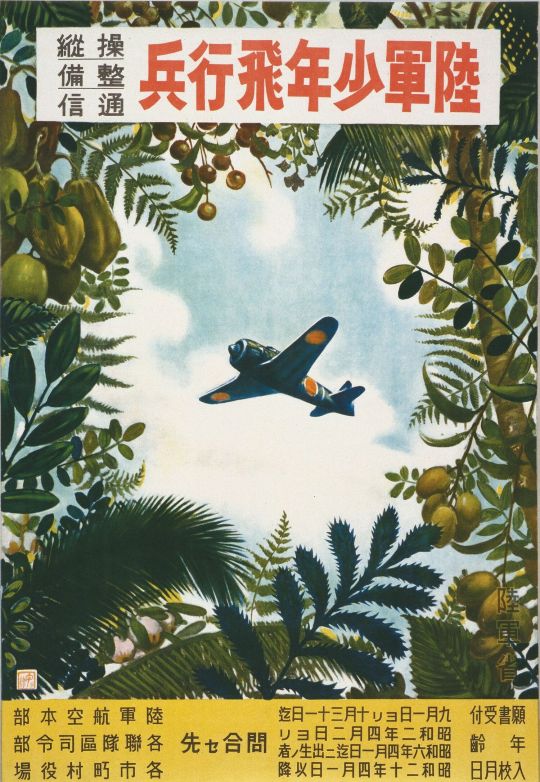
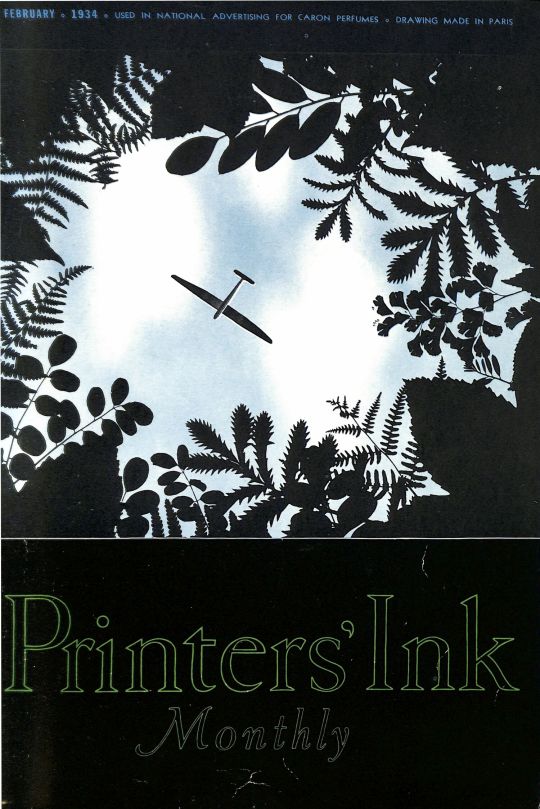
((5ページ目)日本の宣伝デザインの源流にはナチスの影響が…!? 20枚の図版で振り返る“独自発達を遂げた日本製ポスター”の知られざる歴史 | 文春オンラインから)
伊原宇三郎《操縦 整備 通信 陸軍少年飛行兵》
1944年 国立歴史民俗博物館 H-966-4-1-2
戦時期には多くの画家が戦地に赴いているが、伊原にも陸軍嘱託画家として、南方に派遣された経験があった。このため、本作も「実体験」を踏まえたものと思われてきた。ところが、実態には広告専門誌の表紙を飾った、化粧品会社の広告《香水「飛行」》から、着想を得た作品であった。もっとも、後者が伊原にとって「使える」存在に映った背景には、従軍時に現地で目にした、「似た景色」が関係していたのは確かである。前者において上空を飛行するのは、「鍾馗」という愛称を持つ、陸軍二式単座戦闘機である。
- - - - - - - - - - - - - - - -
J.G.バラードっぽくて素敵。
9 notes
·
View notes
Text


#おでかけ #国際芸術祭あいち2022
ミット��ジャイイン 「ピープルズ・ウォール」
軒下など、屋外の数カ所で展示されていたミット・ジャイインの作品。キャンバス地を細長く切ったような厚手の生地に、淡い色が付けられています。まるで暖簾のような作品は風に吹かれて穏やかにゆらゆら。風の動きを視覚的に感じられて、涼し気な印象でした。

古い街並みの向こうに名古屋高速の高架が通っています。木造の向こうに見ると、近未来感が際立つんだよなぁ……。
前に訪れた時も時空が入り乱れたような不思議な感じだなぁと思っていましたが、何回見ても面白いものですね。
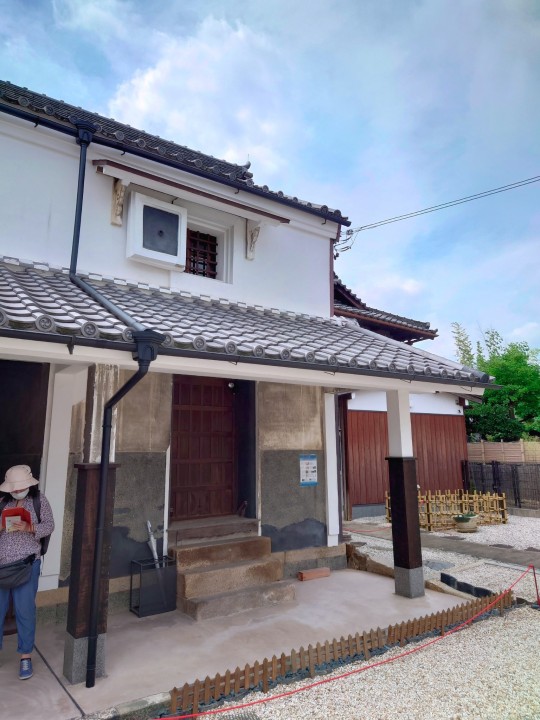
川村家住宅の展示は蔵の中での展示でした。蔵の中に入れる機会も中々ないぞ。

屋根の上にちょこんと鍾馗像。有松ではよく屋根の上に鍾馗像が乗っていますが、これは有松地区ならではのものなのか、江戸時代の家にはよく乗っていたものなのか、どっちなんでしょう?お腹の部分に「有」と彫ってあるのが何だか愛らしいです。
9 notes
·
View notes
Photo

像個模型電車啊! #變形金剛 #鍾馗 #博派 #transformers #transformersphotography #transformersforlife #transformersgenerations #autobots #mpg01 #transformersmasterpiece #trainbot #shouki https://www.instagram.com/p/CfbmR9mJZmG/?igshid=NGJjMDIxMWI=
#變形金剛#鍾馗#博派#transformers#transformersphotography#transformersforlife#transformersgenerations#autobots#mpg01#transformersmasterpiece#trainbot#shouki
0 notes
Text


鍾馗
藝文舊談 – 端午話鍾馗
端午節談鍾馗與香包
吳文彬的傳統工筆藝術 – 寫在父親的百年忌辰
吳文彬線上紀念館
#質園書屋 ,歡迎您去看看
2 notes
·
View notes


